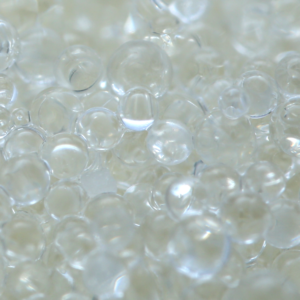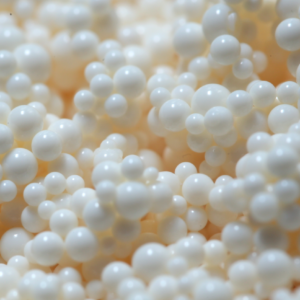Model | Exchange Capacity mmol/mL | Moisture Content % | Wet True Density g/ml 20℃ | Bulk Density g/ml | Particle Size mm/ % | Uniformity Coefficient | PH Range | Max Tem ℃ |
001X4 Na+ | ≥1.4 | 55~60 | ||||||
Description
Purexion Cation Pro is a type of cation ion – exchange resin that has the ability to exchange cations.
Basic Structure
It usually consists of a polymeric matrix, such as polystyrene – divinylbenzene copolymer, with functional groups attached. The most common functional groups are sulfonic acid groups (-SO_3H), carboxylic acid groups (-COOH), etc. These functional groups can release hydrogen ions (H^+) and exchange them with other cations in the surrounding solution.
Working Principle
When the cation – exchange resin is placed in a solution containing cations, the cations in the solution will diffuse into the resin. The hydrogen ions on the functional groups of the resin will be exchanged with the cations in the solution according to the ion – exchange equilibrium principle. For example, in the case of a strong – acid cation – exchange resin, it can exchange hydrogen ions with various metal cations like sodium ions (Na^+), calcium ions (Ca^{2 +}), and magnesium ions (Mg^{2 +}).
Applications
It is widely used in many fields. In water treatment, it is used to remove hardness – causing cations from water, such as calcium and magnesium ions, to achieve water softening. In the pharmaceutical industry, it is used for the separation and purification of some drugs. In the food industry, it can be used for the purification of sugar solutions. In addition, it also has applications in chemical laboratories for the separation and analysis of various cations.
Features
The advantages of cation – exchange resins include high exchange capacity, good selectivity for certain cations, and relatively stable chemical properties. However, they also have some limitations. For example, they may be affected by high temperatures and strong oxidants, and their performance may decline over time. Regular regeneration is required to maintain their exchange capacity.



